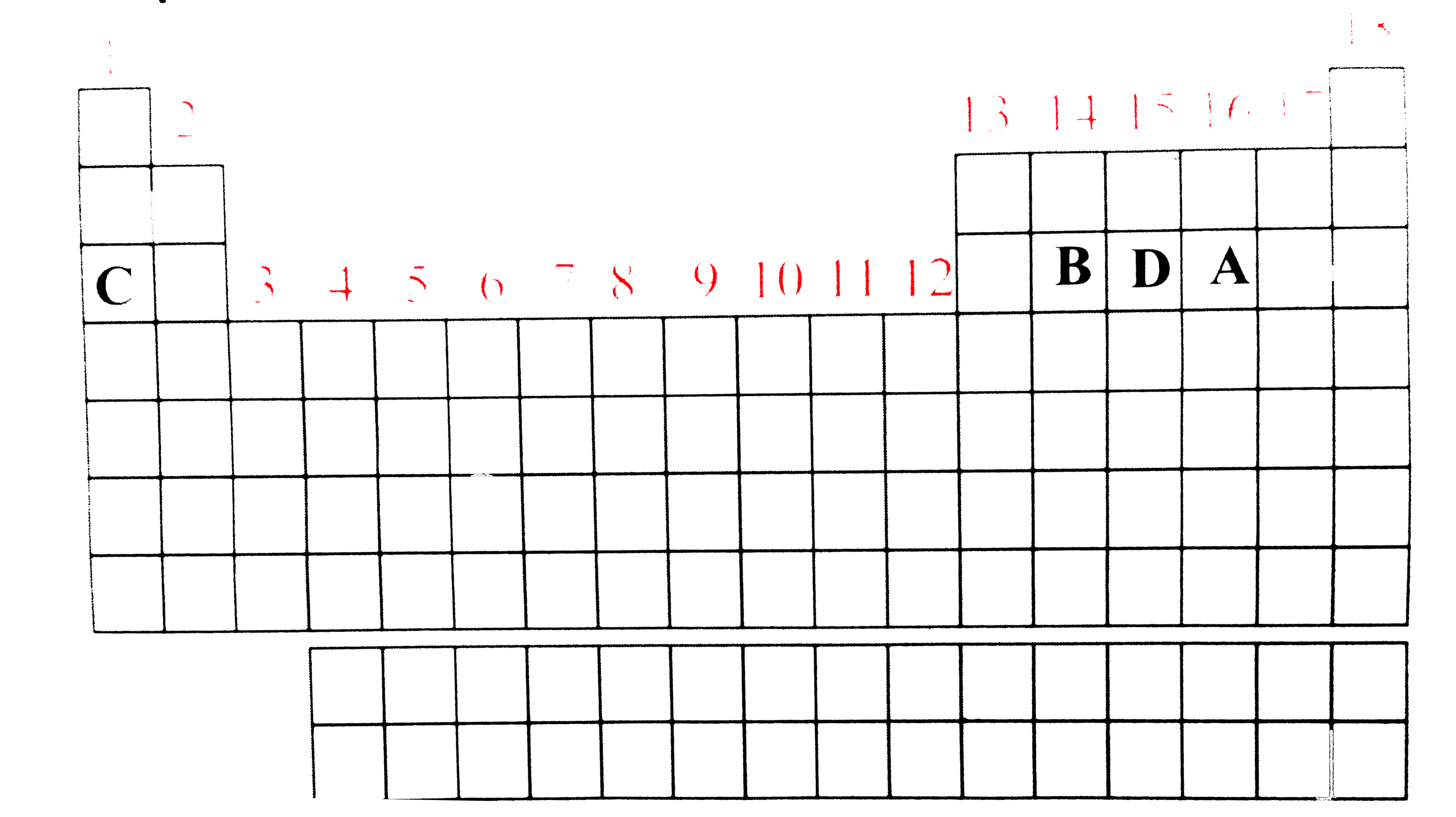Using the part of the periodic table given below, answer the questions that follow.

(i) Na has physical properties similar to which elements and why ?
(ii) Write the electronic configuration of N and P.
(iii) State one property common to fluorine and chlorine.
(i) Na has physical properties similar to Li and K. All the three elements have one electron each in the valence shell of their atoms. These are known as alkali metals. However, the element hydrogen has different physical properties since it is not a part of the group of alkali metals. (ii) Electronic configuration of N (Z = 7) = 2, 5
Electronic configuration of P (Z = 15) = 2, 8, 5
(iii) Both the elements have seven electrons in the valence shells as their atoms and have valency equal to one. Fluorine (Z = 9) 2, 7 , Chlorine (Z = 17) 2, 8, 7.
Topper's Solved these Questions
- PERIODIC CLASSIFICATION OF ELEMENTSBOOK - DINESH PUBLICATIONCHAPTER - PERIODIC CLASSIFICATION OF ELEMENTSEXERCISE - HIGHER ORDER THINKING SKILL BASED QUESTIONS
4 Videos
- PERIODIC CLASSIFICATION OF ELEMENTSBOOK - DINESH PUBLICATIONCHAPTER - PERIODIC CLASSIFICATION OF ELEMENTSEXERCISE - Test Your Knowledge (Very Short Answer Questions)
15 Videos
- PERIODIC CLASSIFICATION OF ELEMENTSBOOK - DINESH PUBLICATIONCHAPTER - PERIODIC CLASSIFICATION OF ELEMENTSEXERCISE - Short Ansewer Questions
41 Videos
- METALS AND NON-METALSBOOK - DINESH PUBLICATIONCHAPTER - METALS AND NON-METALSEXERCISE - MCQ
64 Videos
Similar Questions
Using the part of the Periodic Table given below, answer the questions that follow :

(i) Na has physical and chemical properties similar to which element(s) and why?
(ii) Write the electronic configuration of N and P. Which one of these will be more electronegative and why?
(iii) State a chemical property common to fluorine and chlorine.
View SolutionUsing the part of the Periodic Table given below, answer the questions that follow:

(i) Na has physical and chemical properties similar to which element (s) and why? (ii) Write the electronic configuration of N and P. Which one of these will be more electronegative and why? (iii) State a chemical property common to fluorine and chlorine.
View Solution
Knowledge Check
An element X belongs to the fourth period and the fifteenth group of the periodic table. Which one of the following is true regarding the outer electronic configuration of X? It has
Ahalf-filled d-orbitals and half-filled p-orbitalsBcompletely filled s−,p−, and d-orbitalsCcompletely filled s-and p-orbitalsDcompletely filled s-orbitals and partially filled p-orbitals
The position of eight elements in the Modern Periodic Table is given below where atomic numbers of elements are given in the parenthesis.

(i) Write the electronic configuration of Ca. (ii) Predict the number of valence electrons in Rb. i (iii) What is the number of shells in Sr? (iv) Predict whether K is a metal or a non-metal. (v) Which one of these elements has the largest atom in size? (vi) Arrange Be, Ca, Mg and Rb in the increasing order of the size of their respective atoms.
View SolutionStudy the below given periodic table in which four elements are indicated by alphabets: A, B, C and D.

Identify element 'A' and write its electronic configuration.
View SolutionTwo elements A and B have atomic numbers 11 and 17 respectively. Answer the questions based on the statement given above.
(i) Write the electronic configuration for these elements.
(ii) To which period of the modern periodic table do these two elements belong? Give reason for your answer.
(iii) What type of bond would be formed between them and why?
View SolutionAn element 'A' has atomic number 28. What is the
electronic configuration of the elements below it in the periodic table? Predict their chemical properties.
View SolutionExplain the variation in the following properties of the elements in the periodic table.
(i) Atomic radius in the periodic table (ii) Metallic character in a period (iii) Valency in a group.
View SolutionStudy the following table in which positions of six elements A,B,C,D,E and F are shown as they are in the modern periodic table.

On the basis of the above table, answer the following question :
(i) Name the element which form only covalent compounds.
(ii) Name the element which is a metal with valency three.
(iii) Name the element which is a non-metal with valency three.
(iv) Out of D and E, which is bigger in size and why ?
(iv) Write the common name for the family to which the elements C and F belongs.
View SolutionTable given below shows a part of the periodic table

Using this table explain why
Fluorine is more reactive than chlorine?
View Solution
